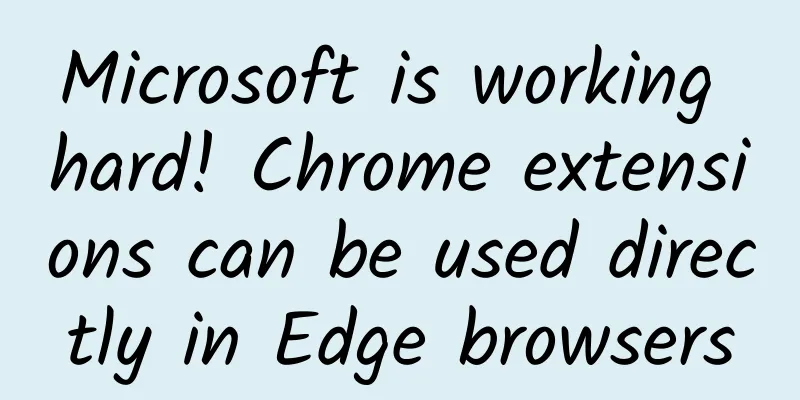What does Ubuntu Phone mean for the open source world?

|
At the beginning of the article, I first introduce myself. I am responsible for management and leadership of an open source community. I worked as an Ubuntu community manager at Canonical for eight years, leading a team of six and providing consulting advice on community management through my own professional practice. Just last year, I joined the XPRIZE website. I have written several small books such as "The Art of Community" and "How to Deal with Lack of Respect", established the Community Summit - held in Portland every year before OSCON - is one of the co-founders of the Bad Voltage technology podcast and composes some music works from time to time. My work focuses on community management. I believe that a community with a good organization and collaboration system can unleash great power to accomplish many seemingly impossible goals and conquer one technological peak after another that an individual can never reach. Open source is a brilliant masterpiece in this field, and we have also witnessed the concept of open source community continue to expand and popularize to a wider range of fields. In fact, when I chose Ubuntu as the topic to start with, I initially refused. The reason is very simple: I don't want people to think that this article is biased just because I have worked for the Ubuntu project for quite a long time. Please put aside your prejudices and believe that I will present credible discussion content to you from an independent and true perspective. Having said so much off-topic talk, let’s officially start today’s content - Ubuntu. Ubuntu I think when commenting on the development history of Ubuntu, one of the core trends should not be ignored in any case - the focus on integration. Integration is not only fully reflected in the Ubuntu project, but also has a profound impact on the entire open source community. For those who are working in related fields, Ubuntu's focus will certainly not be unfamiliar. As an open source operating system, Ubuntu once focused on the desktop, but now it has begun to integrate a large number of carriers such as desktops, mobile phones, tablets, TVs, toasters, and unicorn positioning system platforms, and cover them in a single code base. The Ubuntu community hopes to make the platform have a more rapid development trend and make it easy to migrate code between different hardware, which will open up new market space and business opportunities. This strategic adjustment directly led to a variety of key new products: Unity, Mir, click package, Ubuntu SDK, etc. It also triggered widespread controversy - including Canonical's new business focus, accusations from the National Institutes of Health, and conspiracy theories about Mark Shuttleworth's real motives (although it's a bit confusing, reading the relevant news is indeed a lot of fun). However, the dust has slowly settled, so the Canonical development team and the company can continue to build their ideal solution. Soon, I will have the honor of purchasing the world's first Ubuntu phone. So the question is, can the marriage of Ubuntu and mobile phones bring about the desired results? At this point, it's hard to say what the end result will be. There's no doubt that the engineering team has accomplished an incredible feat - and yes, what we've seen is very impressive. They've built a converged mobile environment that includes an application developer platform, a display server, a range of applications, all the functional components (such as settings, networking, Bluetooth, etc.) and pushed it all onto the hardware. Even the most critical critics should give Ubuntu Engineering a thumbs up for what they've accomplished, given their limited resources and tight timelines. Ubuntu's path to mobile platforms depends on several key factors: scope, simplicity and security. There's no need to go into detail about the simplicity and security elements. The Ubuntu Phone is a product that's easy to use, making good use of the screen's edge real estate and using notifications to give users quick and easy access to key content. Likewise, the security model built into the Ubuntu Phone is excellent, and the Ubuntu security team deserves recognition for their work. The biggest problem is scope: as a consumer technology solution, Ubuntu Phone aims to help content creators visualize their work in a simple way, and all they can use is the home screen on the phone. This content can belong to a dedicated scope (such as Grooveshark) or a collection of multiple content sources (such as music applications). To evaluate whether such scope setting is successful, there are two main elements that need to be evaluated: users and content creators. For content creators, reach is essential. If you have a service, a platform, or a lot of content to publish, reach is a really low-cost way to get your content in front of your audience. Your content is no longer hidden behind app icons, it’s directly on the home screen of your phone. You can also combine it with other content to push visibility to a new level. Similarly, for service providers and phone manufacturers, this scope setting is also very practical. Google has a leading position in the market by virtue of its service layer advantages, which form the characteristics of short, flat and fast content delivery. Without these services, users do not need such a competitive mobile product. Therefore, the development model adopted by Ubuntu is very interesting - and has a clear enough difference. In summary, Ubuntu Phone is very attractive to those who want to launch mobile products and use it as a carrier to deliver content, but what is its image in the eyes of users? Well, I'm afraid only time can give us the answer. While the concept of reach does make sense in theory, whether it can actually translate into a positive market response remains to be seen. Content distribution is a serious task that cannot afford to make any mistakes: if you don’t find the right balance and just bombard people with a large number of messages, people will simply not pay attention and will simply turn it off. If you can’t provide content that is intuitive and visual enough, content providers will abandon this distribution channel. The key question is whether scope settings will be integrated into people's daily lives in a natural way or forced into applications in an annoying way. Different people use their phones for very different purposes. I use my phone to send and receive email, check social media, browse the web, publish podcasts, and watch videos. Others use their phones to make calls and check email. Others write their own long books on their phones. It’s difficult to set scope models to fully meet the actual needs of each of these users, mainly because their needs are unclear from the beginning of scope model (e.g. content publishing) and application (e.g. content editing) solutions. So, in short, the scope model is an important logical guide for companies to differentiate their mobile product audiences and innovate without causing fragmentation problems. What is really unclear is whether users are willing or happy to accept this brand new Ubuntu phone. The answer will only become clear after the phone enters the market and has been in operation for a period of time, but I firmly believe that the above theory is an important condition for Ubuntu to survive in this new environment. Born Different While many critics will criticize Canonical for this overall direction, and Phoronix's headlines are fanning the flames, I still have to give Canonical and its technical community the utmost respect for their efforts in making new and differentiated attempts. I admire what Mozilla and Jolla have done with their respective mobile platforms. While generally speaking, they've done everything that's already been done on existing smartphone platforms, but in a different way (and in the case of FirefoxOS, that's very much the same, with a strong focus on important emerging markets). But Canonical has gone a step further and taken a very different approach: the scope is a new model, the application developer model is new, and the actual performance of Ubuntu on mobile phones is a breath of fresh air. With Ubuntu as the vanguard, Canonical will have the potential to disrupt the already entrenched mobile market, and has the confidence to use the new achievements to integrate them into a larger integrated system, and its implementation method is completely in line with the spirit of freedom and open source. Is this a risky endeavor? The answer is definitely yes. Canonical is putting all their chickens into the fusion basket, but if they succeed, it will open up a new and exciting era - not only for Ubuntu, but for the entire open source industry. Original English text: http://opensource.com/business/15/2/what-ubuntu-phone-could-mean-open-source |
<<: iOS source code: Chart library developed in Swift
>>: Vivid images: mobile thinking and WEB thinking
Recommend
Which 5G phone should I choose with high cost performance? Experience the realme X50 5G and you will know the answer
With the outbreak of the 5G craze, the user marke...
Users are choosing smart TVs, and the spring is coming
At present, intelligence has become a must-have f...
B Station Brand Marketing Guide!
Keywords of this article: Bilibili , brand market...
Who is dividing up Baidu's search traffic?
Are your search habits changing too? In the past,...
120.7 billion! How did Alibaba’s operations experts perform during the 2016 Tmall Double 11 event?
In general, the quality of content on Double Elev...
Brand marketing promotion: the underlying logic behind Durex’s content marketing!
On April 19, the cross-border marketing cooperati...
Happy Birthday to the Mercenary
African mercenaries holding signs asking how much...
WeChat status can be set as QQ music. Netizens: Can you make it more practical?
July 15 news: Recently, the iOS version of WeChat...
Can fish without eyelids also "blink"?
On Monday morning, when you are sitting at your d...
A man born in the 1990s who dropped out of school and quit his job did scientific research for his hobby, and his results were published in Science
He has loved observing insects since he was a chi...
Muzi Hongtu's "Tutorial on Starting a Live Streaming Account with 0 Fans" - Logical steps to start a live streaming account with mainstream gameplay
Course Contents: 1-2022 must read 2- How to break...
Brand promotion methodology | 99% of brands don’t know how to explain their selling points
In the e-commerce industry, everyone knows that s...
Offline marketing activities process and techniques!
A little background information – a large-scale e...
One million users have participated in testing Windows 10
Microsoft released the first technical preview of...









